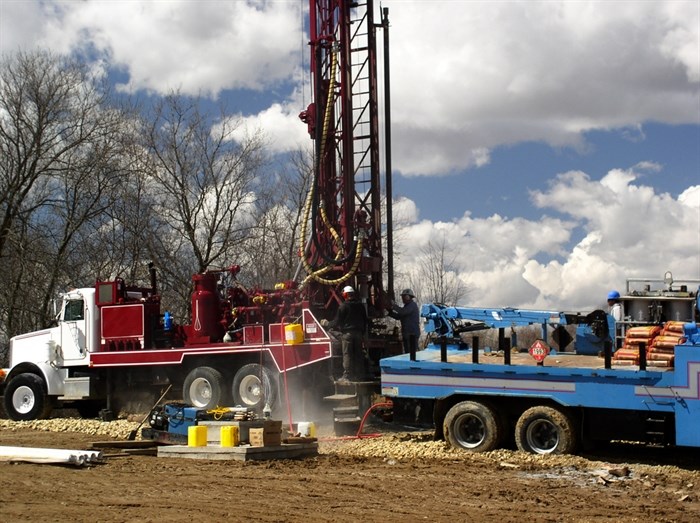
Drilling rigs drill for water in this undated stock image. An UBC Okanagan hydrogeologist says the huge Rutland aquifer running under Kelowna, which is the water source for thousands of residents, is showing signs of stress.
Image Credit: Shutterstock
September 22, 2015 - 6:05 AM
KELOWNA - A UBC Okanagan hydrogeologist says the huge Rutland aquifer running under Kelowna, which is the water source for thousands of residents, is showing signs of stress.
And that means it’s time for a well-designed technical management plan of both ground and surface water sources in the Central Okanagan, Dr. Craig Nichol says, pointing out both sources are really the same thing.
“We’ve reached a point where there isn’t a big supply of groundwater that’s untapped and what we have needs careful management," Nichol says. "Ground water and surface water aren’t separate pools. There is not a separate untapped supply of water flowing to the lake in groundwater.”
Nichol says Kelowna sits atop the Kelowna aquifer systems. There is what’s known as an unconfined aquifier sitting about 10 metres below the surface and then a thick layer of coarse-grained material and glacial till from the last ice age.
“Underneath that is a confined aquifer known as the Rutland aquifer. It’s about 50 to 100 metres deep in general.”
The source of replenishment for the Rutland aquifer are the same upland lakes and reservoirs which supply the bulk of the surface water to Kelowna, Nichol explains, with underground water flowing from the benchlands along the eastern side of the valley underneath Kelowna and into Okanagan Lake.
Nichol says measurements taken during fields studies with both undergraduate and graduate students showed the water flowing into the lake is significantly less — about 10 per cent — than the amount drawn from the aquifer through water wells as well as the amount of surface water drawn from upland reservoirs.
"We are intercepting a significant portion of water before it gets to Okanagan Lake. The amount of water arriving at the lakeshore is small compared to the amount of pumping we already know is going on in the aquifer.”
While it is possible to manage an aquifer, drawing it down during summer and fall in expectation of it recharging during the winter and spring, Nichol says not enough is known about the aquifer and it would be risky to assume the low volume of water entering the lake is anything other than a sign the Rutland aquifer may be oversubscribed.
Nichol praises the province's new Water Sustainability Act, an overhaul of the Water Act, due to come into force next spring.
“It is making it more explicit in the ways water can be used and usage is going to be regulated. At the moment, surface water is fairly tightlly regulated but groundwater is only under certain circumstances. Under the new act, it’s all treated as one resource."
To contact the reporter for this story, email John McDonald at jmcdonald@infonews.ca or call 250-808-0143. To contact the editor, email mjones@infonews.ca or call 250-718-2724.
News from © iNFOnews, 2015